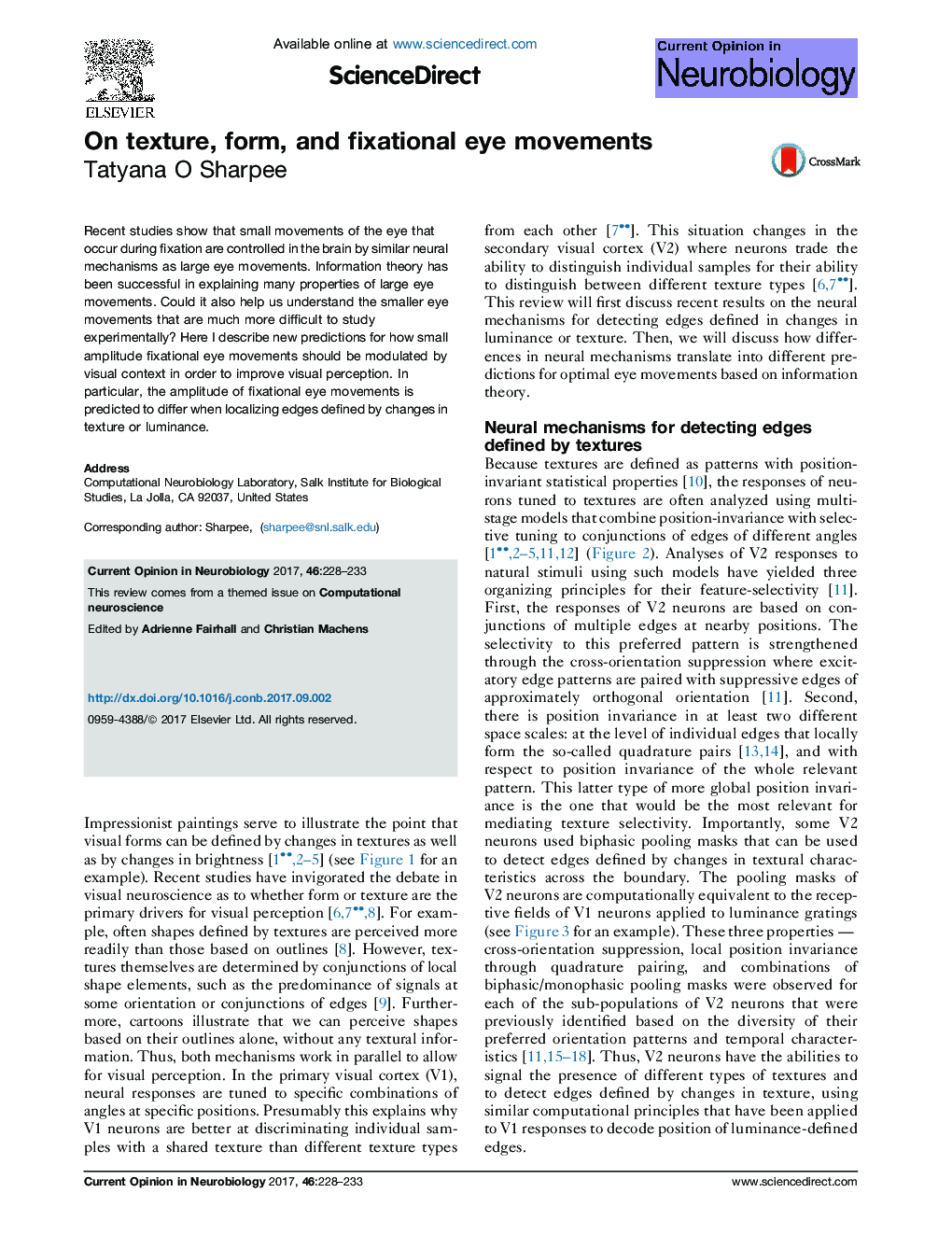| Article ID | Journal | Published Year | Pages | File Type |
|---|---|---|---|---|
| 5736990 | Current Opinion in Neurobiology | 2017 | 6 Pages |
Abstract
Recent studies show that small movements of the eye that occur during fixation are controlled in the brain by similar neural mechanisms as large eye movements. Information theory has been successful in explaining many properties of large eye movements. Could it also help us understand the smaller eye movements that are much more difficult to study experimentally? Here I describe new predictions for how small amplitude fixational eye movements should be modulated by visual context in order to improve visual perception. In particular, the amplitude of fixational eye movements is predicted to differ when localizing edges defined by changes in texture or luminance.
Related Topics
Life Sciences
Neuroscience
Neuroscience (General)
Authors
Tatyana O Sharpee,
